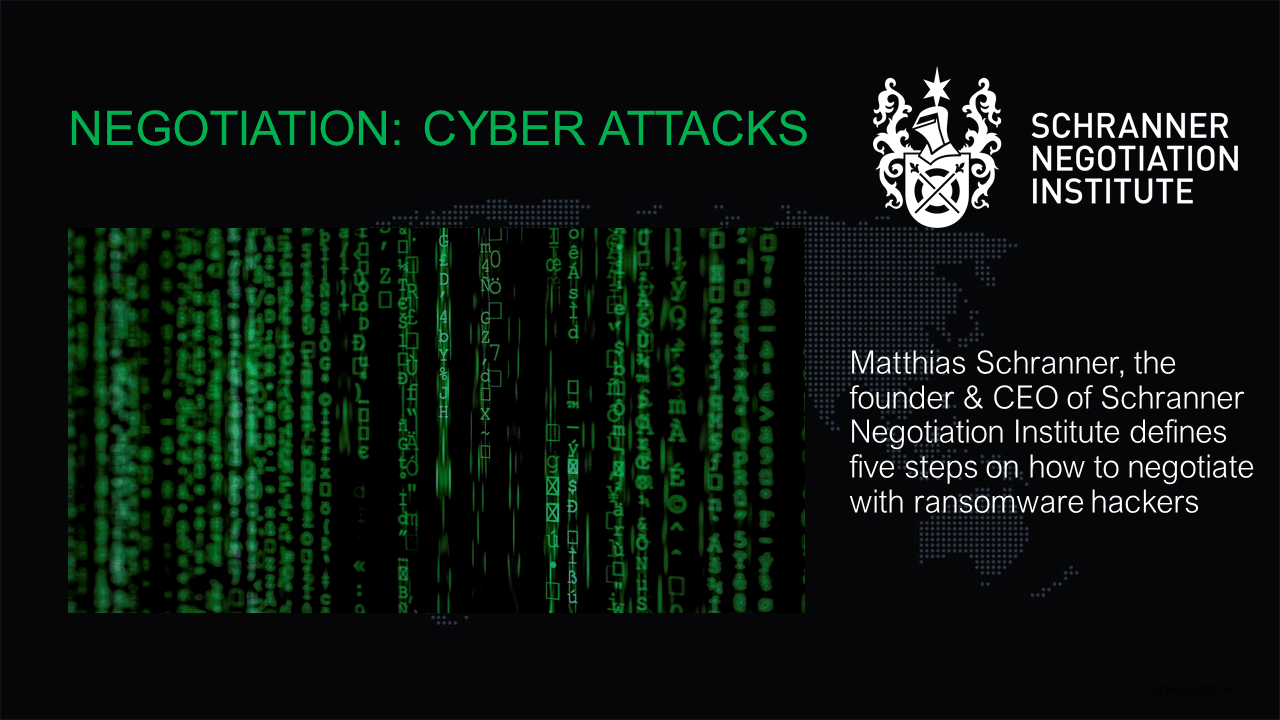How to negotiate with ransomware hackers?
Matthias Schranner, a former FBI hostage negotiator and CEO of the Schranner Negotiation Institute, defines 5 steps on how to negotiate with ransomware hackers.
Become a skilled negotiator and learn new deal making and contract negotiation techniques to be used if you company has fallen victim to a cybercrime.
Step 2: Set up a negotiating team
Ideally, you will never negotiate alone. Your team should consist of an external Negotiator, a Commander, and a Decision Maker. The latter makes the final decision about the agreement and has overall responsibility.
It is vital to have an external expert who is experienced in these situations and not emotionally invested in the company.
In the preparation phase, the team has to agree on the following:
- What is the targeted outcome of the negotiation? (E.g., getting the system restored as soon as possible)
- What is your walk away position? (E.g., the maximum amount you are ready to pay)
Negotiating Team Setup
The FBI team setup is perfect for business negotiations. Ideally, a Negotiator has the same position as a Commander or below the Commander. The Negotiator gets clear instructions from a Decision Maker, including minimum and maximum targets, strategy, and tactics. That needs to be documented before the negotiation.
If a negotiator makes a mistake, a Commander or Decision Maker can replace that person at any time. (E.g. In case minimum targets have not been observed, or too many concessions have been made.) The concessions are tied to the Negotiator and therefore can be reclaimed. The worst case scenario is when a Decision Maker or Commander makes a mistake as their decisions are binding.
Negotiator
- Introduces themselves;
- Clarifies the responsibilities;
- Clarifies that the Decision Maker has absolute decision-making power due to legal reasons; however, this does not limit the Negotiator’s competence.
Commander
- Introduce themselves but remain in the background;
- Listens and takes notes but does not interfere with the negotiation process;
- Informs the Negotiator how he interprets what is being said by the opponents;
- Guides the Negotiator on introducing alternatives, options, and concessions;
- Emotionally supports the Negotiator in stressful situations by showing approval.
Decision Maker
- Takes decisions;
- Holds absolute responsibility for the decisions made;
- Establishes the framework for the negotiation;
- Defines the max/min targets;
- Establishes strategic objectives but leaves enough room for achieving them;
- Determines when to walk away from negotiations.
Follow us on LinkedIn.
